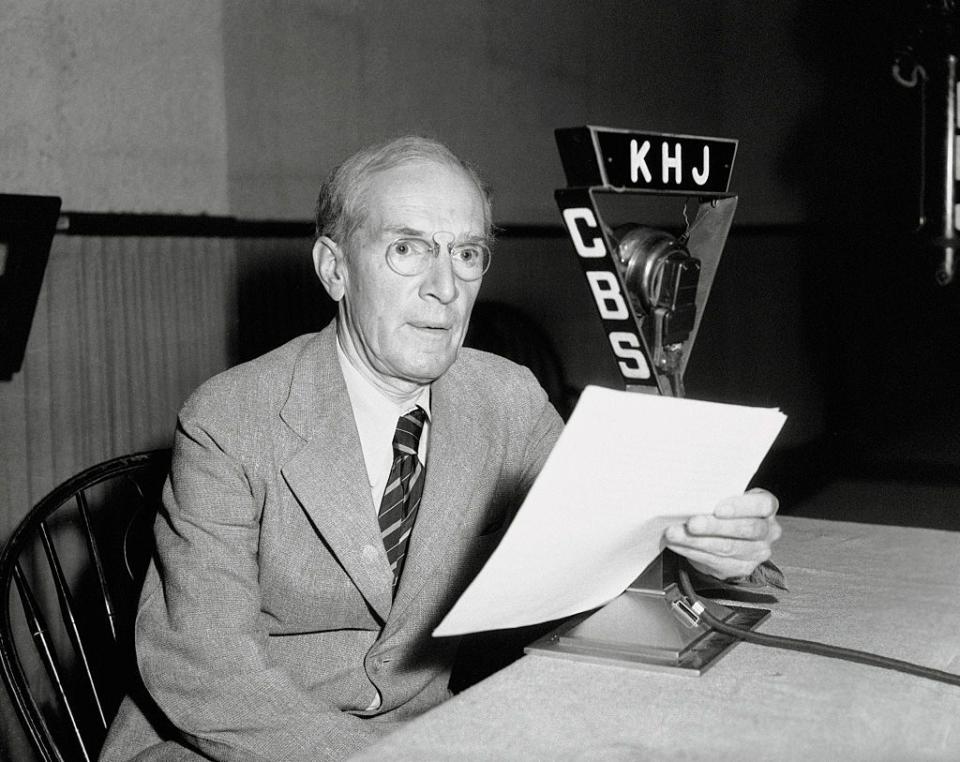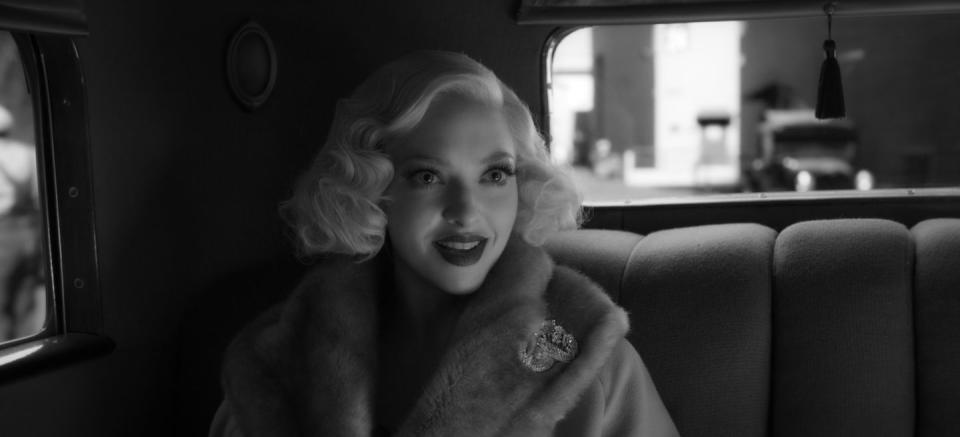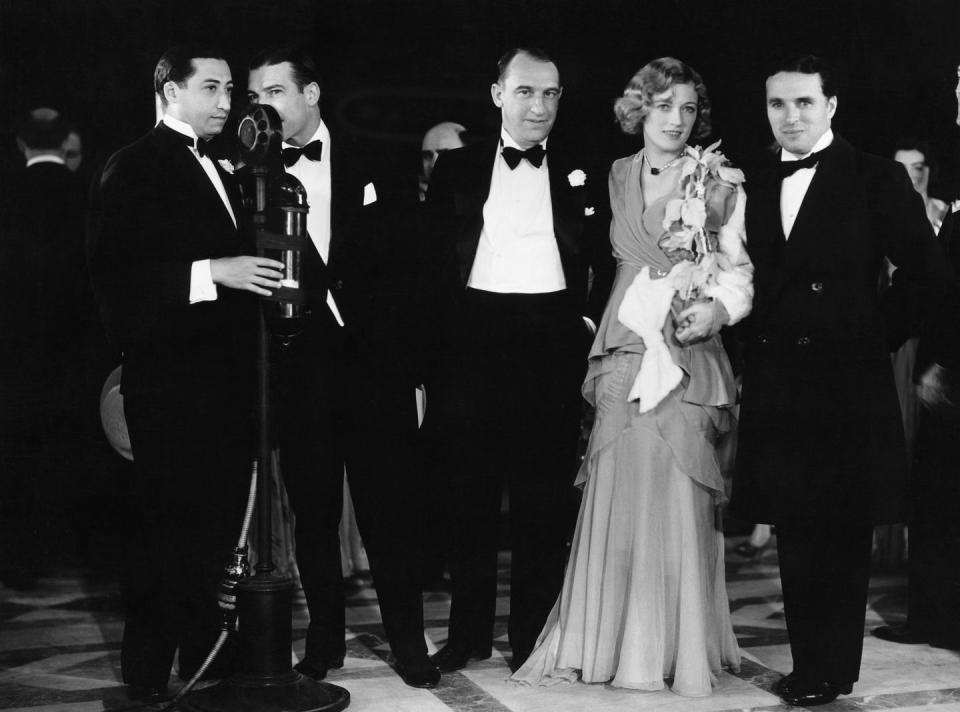The True Story Behind Mank

Call Mank David Fincher’s Rosebud. The director’s father, journalist Jack Fincher, wrote this script about the construction of Citizen Kane in the early 1990s, back when the younger Fincher was merely a whizkid music video director who lacked the Hollywood mojo to get it made. Jack considered Citizen Kane the best movie ever made; his son grants it a slot in the top three. And while Jack passed away in 2003, he lives on in this finally produced film, which stars Gary Oldman as screenwriter Herman J. Mankiewicz, a brilliant, but broken-down drunk who puts his personal demons into the Citizen Kane script only to fight Tom Burke’s Orson Welles for credit.
Mank is so crammed with Hollywood trivia that every line of dialogue could be the opening words of a whole other historical epic, from Louis B. Mayer’s ambitions as a political kingmaker to the tumultuous production of The Wizard of Oz. It's also an awards-season behemoth: The film earned six Golden Globe nominations and is currently nominated for 10 Academy Awards, including Best Picture, Best Director, Best Actor, Best Supporting Actress, and Best Costume Design.
Fincher's father’s fervor could spiral out, well, forever. “I don’t want to get mawkish about that,” Fincher said recently—and, fair enough. What's real in the world of Mank? We found out.
There’s no question who wrote Citizen Kane.

Citizen Kane’s closing credits attribute the original screenplay to Herman J. Mankiewicz and Orson Welles. That was the truth when the film premiered at Broadway’s RKO Palace in May 1941, and 80 years of rumors, animosity, and investigation have only entrenched it. Mankiewicz, a once-swaggering studio screenwriter brought low by alcoholism and gambling, was scraping by adapting literary classics like Huckleberry Finn into radio dramas for Welles’ Mercury players at $200 a pop when the wunderkind invited him to collaborate—uncredited—on a Hollywood script, topic TBD. They kicked around a biopic of Alexandre Dumas, author of The Three Musketeers, and settled on newspaper tycoon William Randolph Hearst and his mistress, the movie star Marion Davies. Skewering Hearst was Mankiewicz’s idea. “I suppose I would remember if it had been me,” admitted Welles. Mankiewicz had tried, and failed, to write a play about Hearst 15 years earlier. This time, Welles gave him a push. With notes from their rowdy brainstorming sessions, and his leg in a cast, Mankiewicz trucked off to a sickbed in Victorville to pound out an ungainly 325-page draft, which Welles halved and polished into the Oscar-winning classic, scrapping a murder subplot that riffed on the mysterious demise of Thomas Ince. None of this should have been controversial. It’s how the co-screenwriting process often works.
Why are people still arguing?

Because Welles and Mankiewicz refused to share the spotlight. Welles wanted sole credit so he could cannonball into Hollywood as its youngest triple-threat. Mankiewicz, exiled to the fringes of the industry, wanted to reclaim a seat at the center. Two hotheads full of belly fire and pique, the first time they met, “both came away enchanted and convinced that, between them, they were the two most dashing and gallantly intelligent gentlemen in the world,” observed Welles’ long-suffering theatrical partner John Houseman, here played by Sam Troughton. Their bromance fizzled after Mankiewicz demanded co-credit for the script and, when Welles chafed, yanked harder, publicly grousing that “there is hardly a comma that I did not write.” Thirty years later, New Yorker film critic Pauline Kael and director Peter Bogdanovich wrote dueling essays that poured gasoline on the embers. Kael waved a banner for Mankiewicz, a former New Yorker critic himself, in her career-long crusade against the auteur theory. Bogdanovich backed fellow director Welles, in part to topple a towering critic who had just slammed his film What’s Up Doc? as “infantile.” Battle lines were drawn, forcing cineastes to take sides. Even the Finchers were a household divided: When the elder Fincher, a longtime journalist for LIFE magazine, finished his first draft of Mank, his director son says he “resented his anti-auteurist take.”
What does Upton Sinclair have to do with this?

Nothing, except in the Finchers’ imaginations. The Jungle journalist was the Bernie Sanders of the Great Depression, a popular progressive who was poised to win the California governorship in 1934 before Hearst teamed with MGM’s Irving Thalberg to defame Sinclair with fake newsreels touting him as a hero to commies, morons, and hobos. Fincher speculates that Sinclair’s failed campaign spurred Mankiewicz’s vengeance against powerful bullies. To twist the knife, Mank invents two major plot points: First, that Mankiewicz gave Thalberg the idea to hire paid actors to play “real” Sinclair voters—“You can make people believe that King Kong is 10 stories tall”—and second, that Mankiewicz’s fictitious friend Shelly Metcalf directs the newsreels and immediately commits suicide in guilt. (The actual director, Felix E. Feist, enjoyed a career bump that stretched for decades.) Besides, Mankiewicz was no fan of unions. He railed against the Screen Writers Guild until he dragged it into his fight to get credit on Citizen Kane.
While we’re talking vintage gossip, Marion Davies was better—and worse—than Kane’s failed soprano Susan Alexander.

Amanda Seyfried nails the captivating contradictions of Hearst’s spoiled paramour. Marion Davies was clever, beautiful, funny, and as shallow as a carnival duck pond. And she’d be the first to admit it. Audiences loved her comedies (especially 1928’s The Patsy) but Davies knew she was damaged by Hearst's publicity machine. “People got so tired of the name Marion Davies that they would actually insult me,” Davies wrote in her chatty memoir, The Times We Had. As a mea culpa, Welles penned the book’s preface and deemed her “delightful.” In the pages that follow, Davies reveals she and Hearst never saw Citizen Kane—and that she doesn’t need Welles or Mankiewicz to damage her reputation. As flip in her 50s as she’d been as a teenage showgirl, Davies giddily recounts a lifetime of collecting celebrities like trading cards, even stalking Adolf Hitler across Frankfurt. "I'd missed Mussolini,” she groaned, “but I got skunked out of [Hitler], too.”
Davies believed in only one mortal sin: Don’t ruin a party.

Seyfried gets that warning across with one sharp glare javelined at Oldman’s Mankiewicz before he pukes on the carpet at San Simeon. To Fincher, that scene was so crucial he shot over 100 takes. It felt “like Groundhog’s Day,” Seyfried recently said to Total Film. Still, Mankiewicz was a popular—if risky—guest who drizzled bon mots, and bodily fluids, at tinsel town’s swankiest gatherings. On low key nights, he’d barge into friends’ houses, help himself to corned beef, pudding, and scotch, and, as a night cap, comb their medicine cabinet. His raccoon raids were so notorious (and habitual) that he trained himself to swallow a pilfered sleeping pill right before he bid adieu, so that he, and his car, would shut down as soon as he pulled into his driveway. Eventually, Mankiewicz printed a sheaf of fill-in-the-blank apology notes for his hangovers: “Dear _____, I want to thank you for the lovely _____ I spent at your home.”
You Might Also Like


